With how many board games that I have reviewed here on Geeky Hobbies I have played some board games with weird concepts in the past. I have played a board game about boogers after all. While not as weird as that, today I am looking at Stampin’ which was a board game designed back in 1989 in association with the United States Postal Service. I actually don’t know a whole lot about the history of this game as I was very young when it was first released. I am guessing one of the main reasons that the game was created though was because the USPS was really pushing stamp collecting around that time as a way to generate more revenue. The idea of creating a board game about stamp collecting is on the surface a interesting idea as it seems to fit perfectly with a set collecting mechanic. As a big fan of set collecting games I was hoping that Stampin’ would create an interesting and fun set collecting game. Stampin’ deserves a lot of credit for putting in the effort to try and create a good stamp collecting game, but unfortunately that work lead to a semi-broken and ultimately unsatisfying game.
How to Play Stampin’
Setup
- Shuffle the stamp cards. Deal six cards to each player face down. The rest of the cards are placed on the Stamp Deck space on the gameboard.
- Each player chooses a playing piece and places it on the corner space to their right.
- Each player takes the Keeper and Demand card of their color.
- Choose someone to be the banker. The banker should give five bills of each denomination to each player. The remaining money forms the bank.
- The players take turns rolling the dice. The player who rolls highest will start the game. Play will then proceed clockwise for the rest of the game.
Playing the Game
On a player’s turn they can choose to take one of two actions.
First they can choose to roll the dice and move their playing piece the corresponding number of spaces right around the gameboard. If the player rolls doubles they can choose to either pay the bank 5 cents and re-roll the dice, or they can forfeit the rest of their turn and not move their piece. After moving their piece the current player will take an action based on what is printed on the space they landed on.
If you land on a space that another player currently occupies you will compete in a “dice duel”. Both players will roll the dice. Whoever rolls higher will take 8 cents from the other player. The player then follows the directions on the space that they landed on.
Instead of rolling the dice and moving their piece the player can choose to buy one or two stamps from the top of the discard piles for the price listed on the card. They may purchase two stamps from the same pile or one stamp from both piles. They will then discard a number of stamps equal to the number they bought. This is because you can only have six cards in your hand at the beginning and end of your turn. The cards that are discarded can be placed on the same pile or different piles. All cards that are discarded are placed face up on the board.
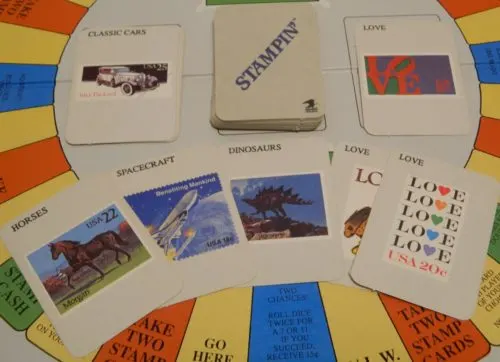
Instead of rolling the dice and moving this player has decided to buy cards from the discard piles. As they already have two “Love” cards they should probably purchase the card on the top of the right discard pile for eight cents as it would give them three cards for that set. As they bought a card they will have to discard a card from their hand to one of the discard piles.
After a player has finished their turn play will pass to the next player clockwise.
If the Stamp Deck ever runs out of cards the players will shuffle the cards in the discard piles in order to form a new draw deck.
Collecting Stamps
When a player collects three stamps of the same category in their hand they will place them face down on the table in front of themselves. They will then draw three new cards from the draw pile and add them to their hand. If they have another set of three matching cards they will repeat the process.
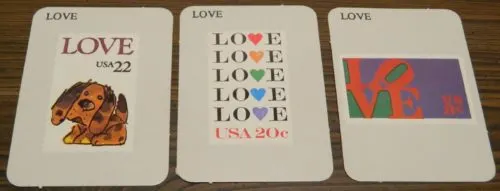
This player collected three “Love” stamps so they can place them on the table keeping them safe from other players. In the actual game they would place the cards face down so other players couldn’t see what they were.
When a player finds the fourth card from their set they will add the fourth card to their other three cards and turn over the set. Two of the stamp cards are wild. These cards can be used as the fourth card in a set.
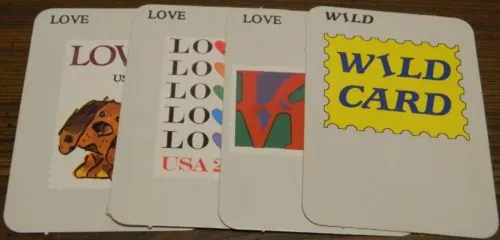
This player had a wild to add to their three of a kind so they turn the set face up on the table. This player has now completed one of the sets they need to win the game.
Once a set is completed the wild card can be replaced with the corresponding card from the category that it was replacing. This can be done by the player that controls the set or another player. By replacing the wild the player takes the wild and adds it to their hand to be used in another set. This action can only be done at the beginning of a player’s turn. If a player takes this action their turn ends immediately. Even if they have a set that they can use the wild with they have to wait until their next turn to use it.
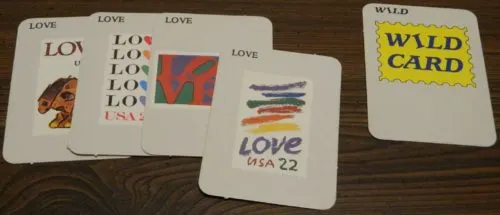
A player played the fourth “Love” stamp to this set to replace the wild card. The player who played the fourth card will get to add the wild card to their hand.
Keeper/Demand Cards
During the game each player will get two Keeper/Demand cards. Once a card is used it is returned to the bank and cannot be used for the rest of the game.
Keeper Cards – When a player doesn’t want to follow the instructions on the space that they landed on they can use their Keeper card. They may then skip taking that action. A Keeper card can also be used to block having to do a trade or exchange with another player. A Keeper card cannot be used to block a Demand card.
Demand Cards – A Demand card allows a player to ask another player for cards of a particular set. If the asked player has cards of that set they must give all of the cards from their hand that match the chosen set. In exchange for the cards given to the asking player, the asking player has to give the same number of cards from their hand (their choice) to the player who gave them cards. The player will lose their Demand card even if the player they asked didn’t have cards of the category that they asked about.
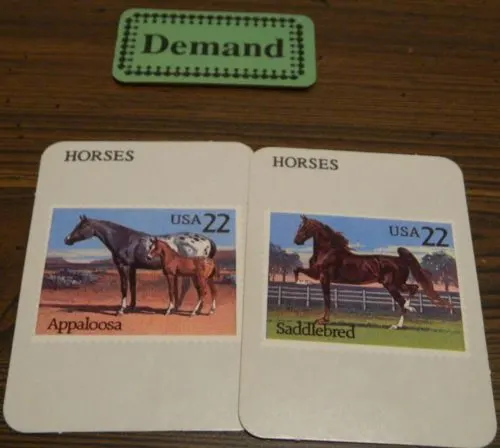
The current player is collecting horse stamps and they think another player has some in their hand. They chose to use their Demand card to ask that player for their horse stamps. As they had two in their hand they will give them to the asking player. The asking player will give them two cards from their hand in exchange.
Special Spaces
Certain spaces on the gameboard has special rules that you must follow when you land on them.
“No Peeky” Exchange/Trade Spaces – When players make these type of exchanges both players will hold up their cards so the other player can’t see them. Both players will take their cards at the same time.
Stamp Auction – Turn over the top stamp card from the draw pile. This card immediately goes up for auction. Players can bid for the card with the minimum bid being 10 cents. The player who bids the most pays the bank and adds the card to their hand. The player will then have to discard one of the cards from their hand. If no one bids the minimum price the card will immediately be added to one of the discard piles.
NLW Stamps – When a player lands on this space they may look through the discard piles and choose a stamp card that they would like to buy. If they don’t want to buy one they don’t have to. If they choose to buy one they will pay the price printed on the card to the bank. The player will have to discard a card if they buy a card.
Winning the Game
When a player acquires two sets of four stamps they will win the game. If there are only two players a player has to collect three sets.
My Thoughts on Stampin’
On the surface Stampin’ had all of the makings of being a pretty terrible game that just slapped the stamp collecting/USPS theme on it in order to sell copies. I have seen the game a surprising number of times at thrift stores and rummage sales over the years and never really had any interest in it. This was mostly because I thought the game would be one of two things. First I thought it was going to be a cheap Monopoly ripoff because around the time that Stampin’ was released pretty much everyone was making their own Monopoly ripoff game. The other option was just a simple roll and move game. Without looking further into the game I thought these two options were the most likely because I honestly didn’t think much effort went into designing the game. I think I ultimately picked up the game because I found it for really cheap at one point where it was worth the tiny financial risk.
After reading through the rules I have to admit that I was kind of surprised by the game as I could tell that some effort was put into the game. Instead of a cheap Monopoly ripoff or a basic roll and move game, the designers actually tried to make a good game. Stampin’ is actually an interesting blend of a set collecting and a roll and move game. The gameplay basically boils down to rolling dice to move around the board. You do this in order to purchase and exchange stamps to get a complete set. The first player to get two complete sets of stamps wins the game.
I have to say that the designer(s) deserve credit for doing a good job trying to match the game mechanics with the theme. It makes perfect sense to build a game about stamp collecting around set collecting. Stamp collecting is basically set collecting after all. The set collecting mechanic in the game does at times do a good job representing stamp collecting. Having to randomly discard stamps doesn’t make a lot of sense, but otherwise the mechanics actually do a good job fitting the overall theme. Each stamp card features a large picture of a stamp that was popular back in 1989. By collecting cards of different types it feels like you are somewhat collecting stamps. The roll and move mechanics don’t make as much sense with the theme, but the designer(s) deserve credit for trying to match the theme and game mechanics as they did a much better job than most board games.
As a fan of set collecting games I will say that I had some fun with the set collecting mechanics in Stampin’. There is nothing particularly original about these mechanics as they are pretty basic set collecting mechanics. The game still maintains the elements of your typical set collecting game though which should lead to some fun for fans of the genre. It is satisfying being able to complete and lay down a set of stamps of the same type. There is a little strategy to the game which mostly deals with choosing which sets to pursue and which to disregard. This mostly comes into play when choosing to purchase cards from the discard piles. Usually this is pretty obvious but there are a couple of times during the game where you have to make a decision which may make the difference between winning and losing the game.
In addition to doing a good job making the mechanics fit the theme, the designer(s) did a good job making the game accessible. The game for the most part is quite easy to play. The game has a recommended age of 8+ which seems about right. If players understand the concept of creating sets the rest of the game should be a breeze. The game can be taught to new players within minutes. I was also pleasantly surprised that the game played a lot quicker than I thought. These type of games almost always take over an hour to complete. Yet I would say that most games of Stampin’ should only take around 30-45 minutes. The shorter length is a good thing for the game as its basic mechanics could have become repetitive in a longer game.
I think Stampin’ deserves a lot of credit because it was honestly better than I thought it was going to be. The designer(s) actually put effort into trying to make a good game which is more than can be said for most of these type of games. The problem is that all that effort kind of goes to waste as Stampin’ feels broken. The problem with Stampin’ is that much of the game feels like a waste of time.
Let’s begin with the roll and move mechanics. It is not surprising that the game features these mechanics as many games from that era did. The problem is that they don’t really add all that much to the game. The gameboard mostly acts as a way to get/lose money, draw new stamp cards, or exchange/trade cards with other players. The game could have easily eliminated the board as it mostly just adds luck to the game. I honestly think the game would have been more enjoyable if it was just a card game where players could buy and trade stamp cards. With the gameboard it feels like too many turns are wasted moving around and landing on spaces that don’t really impact the game in any meaningful way.
The second problem that I had with the game had to deal with the fact that it can be kind of mean at times. The game has a number of spaces that have players exchange/trade cards. This is all done by randomly drawing cards. In these exchanges one player may get a card that they need while another loses one of the cards that they need for a set they are building. Then there are the Demand cards which are by far the most powerful thing in the entire game. Twice during the game you have the opportunity to use a “Go Fish” like mechanic where you get to ask for cards from another player. These cards are really powerful as they let you take multiple cards from another player. If you have a good idea of what sets another player is collecting you can ask for that set and take all of those cards from the other player. This will likely give you the third or fourth card you need for a set so you can set it down and prevent another player from taking them from you. Therefore this other player has no recourse to you stealing cards from them. The players that use these cards well will have a huge advantage in the game. For this reason you need to put down any sets of three cards that you have in your hand right away in order to protect them.
Arguably the biggest issue with the game has to deal with the game’s hand limit size. In the game you can only hold six cards at a time. I can somewhat see why the hand limit was implemented as otherwise players could just hoard stamp cards. The problem is that this leads to significant issues in the game. As you can only have six cards in your hand at a time every time you acquire cards you have to discard other cards. Therefore you need to prioritize sets that you already have cards from. Most of the time there is no reason to buy cards from a set that you don’t already own cards from. There might be a reason to buy cards of a different set if you know that the players have already discarded several cards of that set that you can easily acquire. Otherwise you are better off just sticking with the sets that you already have. Therefore most of the game feels pointless. If a stamp card doesn’t help you with a set that you are already acquiring there is no point in giving it any thought. This is especially bad for the auctions as there is no point in buying a stamp that you don’t need as you have to discard another card for it. Thus whenever a player bids in an auction you can be pretty sure that they are collecting that set. If you are also collecting that set you are better off just letting them take it and then using a demand card to take all of their cards of that set. I don’t know how the game should have handled the hand size limit, but how it is implemented in the game just feels broken.
All of these problems lead to a game that relies almost entirely on luck. There are decisions to make in the game and some of them can be important. The problem is that the game will likely be determined by who gets lucky and draws the cards that they need for the sets that they are collecting. Whether you draw the right cards from the draw pile, get cards you need in an exchange, or have a card you need discarded; the player who gets the cards they need is likely to win the game. Bad decisions can lose you the game, but I think it will be rare that a decision you make will win you the game. This is a shame as I thought Stampin’ had quite a bit of potential. If you tweaked the rules some I think you could actually salvage a decent game out of Stampin’.
Should You Buy Stampin’?
In some ways I was pleasantly surprised by Stampin’ and in other ways I was disappointed. Heading into the game I didn’t have high expectations as I thought it would just be another cheaply made game that had little effort put into it. As I read through the rules and started to play the game though I was genuinely surprised as it looked like effort was put into trying to make Stampin’ a good game. The designer(s) actually did a good job matching the stamp collecting theme with a set collecting mechanic which somewhat feels like collecting stamps. The game is also quite easy to play and plays quicker than I expected. The problem is that much of the game feels pointless. The roll and move mechanics add little to the game where I think the game would have been better off ditching them entirely. The game can also be kind of mean where players can ruin another player’s game by stealing the right cards. Finally the hand limit makes most of the game a waste of time as there really is no reason to pursue sets that you don’t already own cards from. Ultimately Stampin’ is a game that relies on a lot of luck.
Unfortunately I can’t really recommend Stampin’ to many people. If you aren’t a big fan of set collecting board games and stamp collecting I see no reason why you would enjoy the game. Even if you are a big fan of set collecting games there are quite a few problems with Stampin’ where you have to be open to creating your own house rules. If you are a stamp collector though and like set collecting games you may find enough to enjoy about Stampin’ that it might be worth purchasing if you can get a good deal on it.

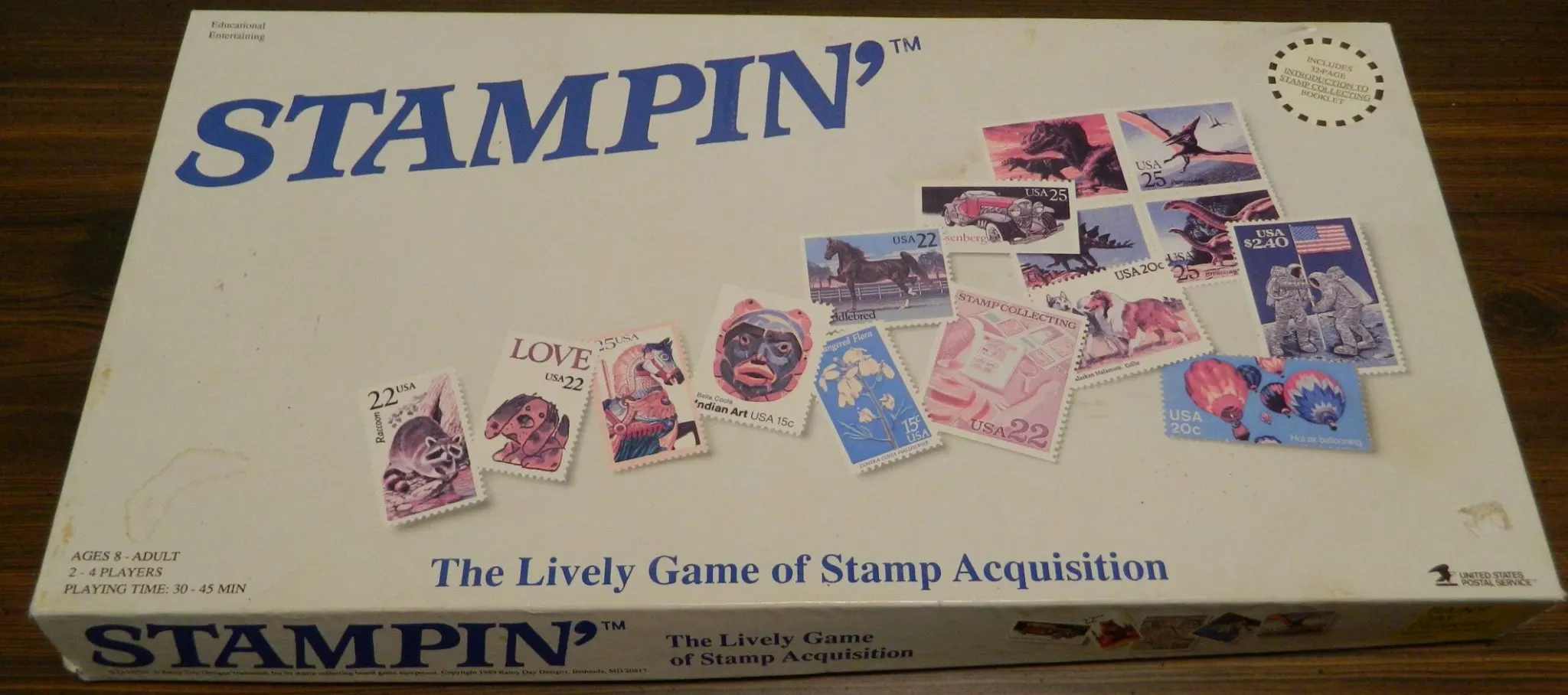
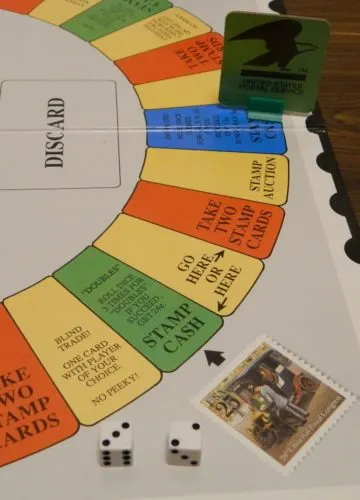
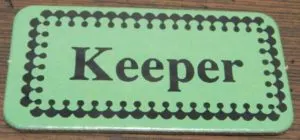
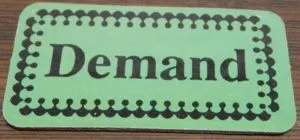
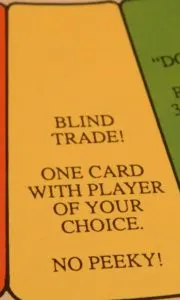
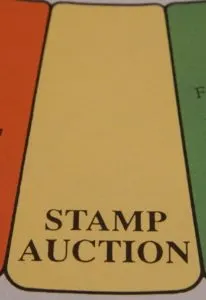
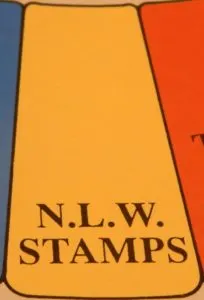
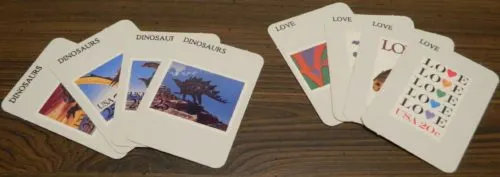
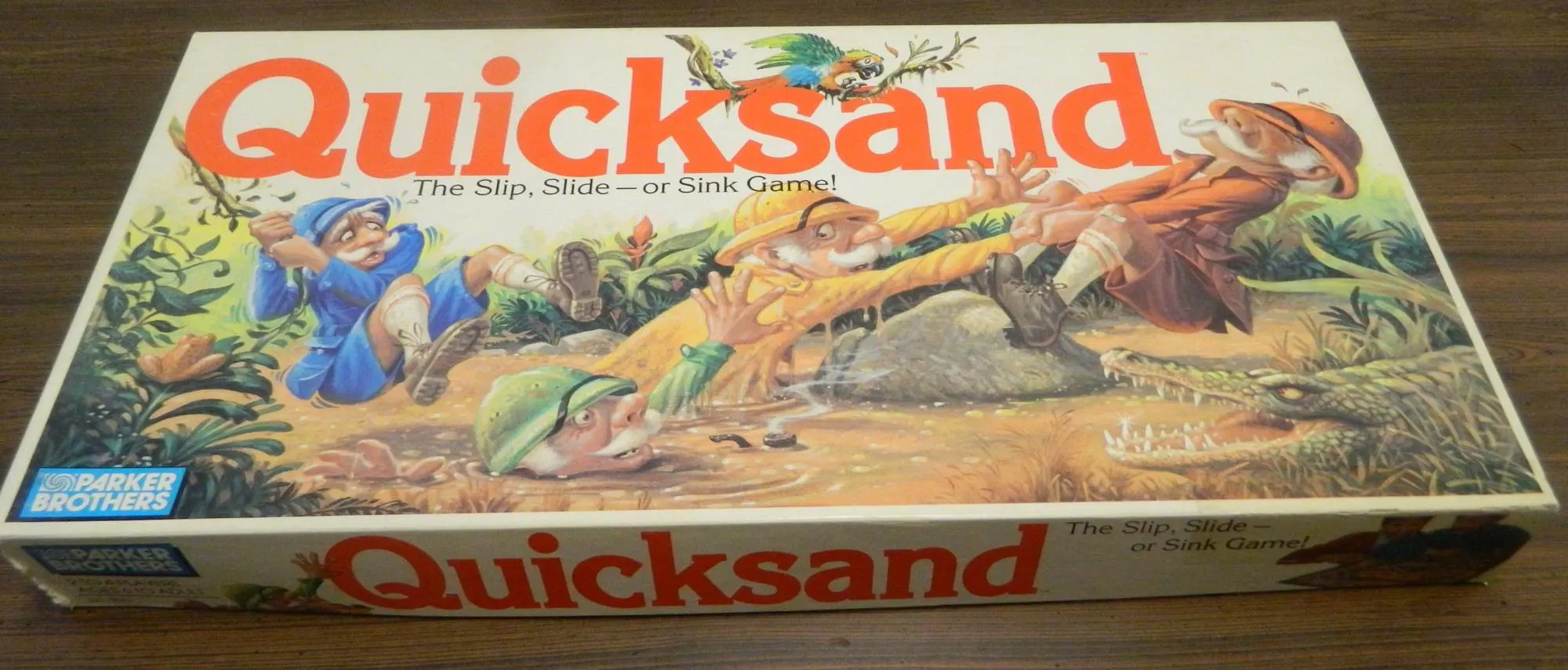
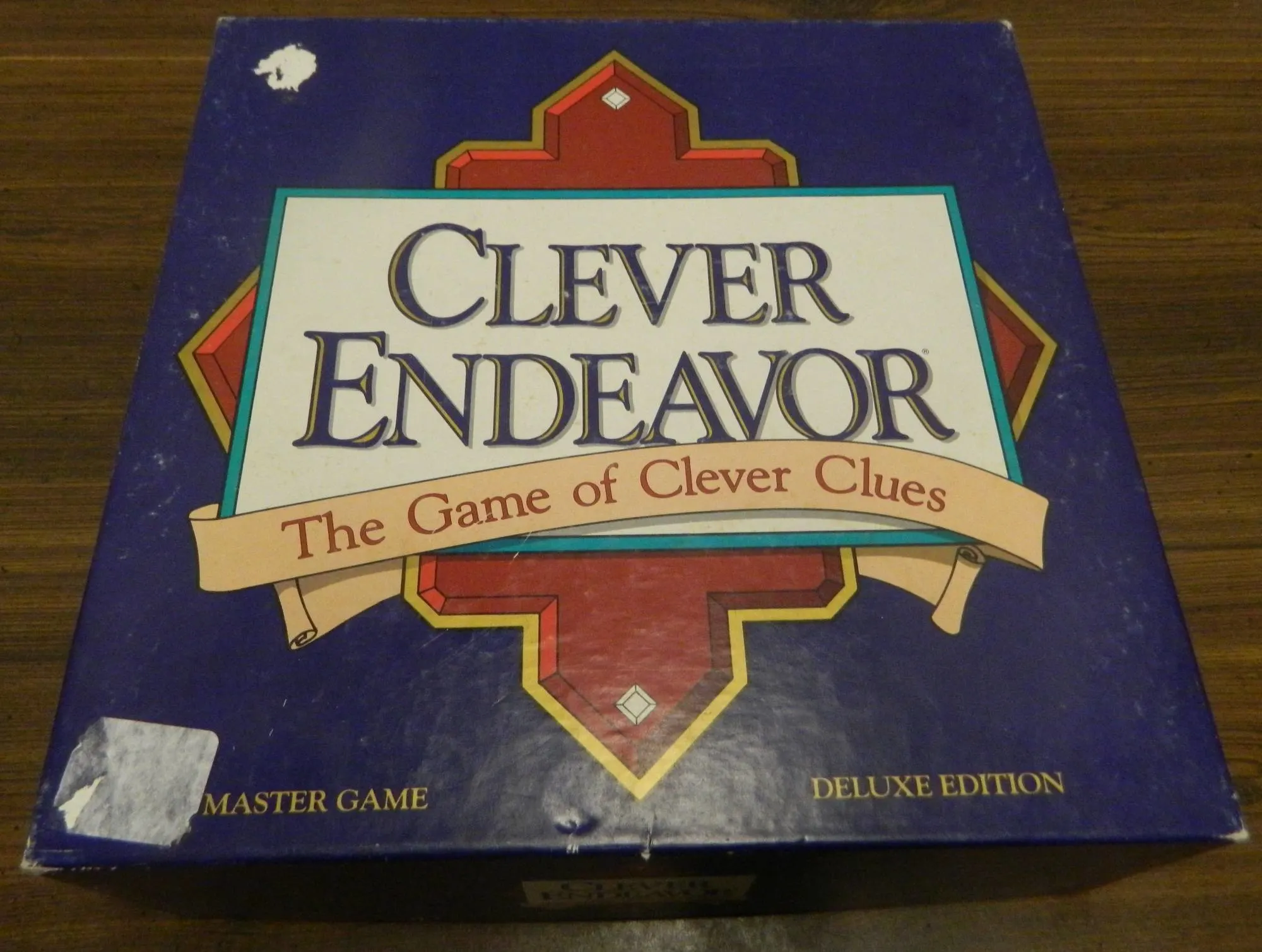
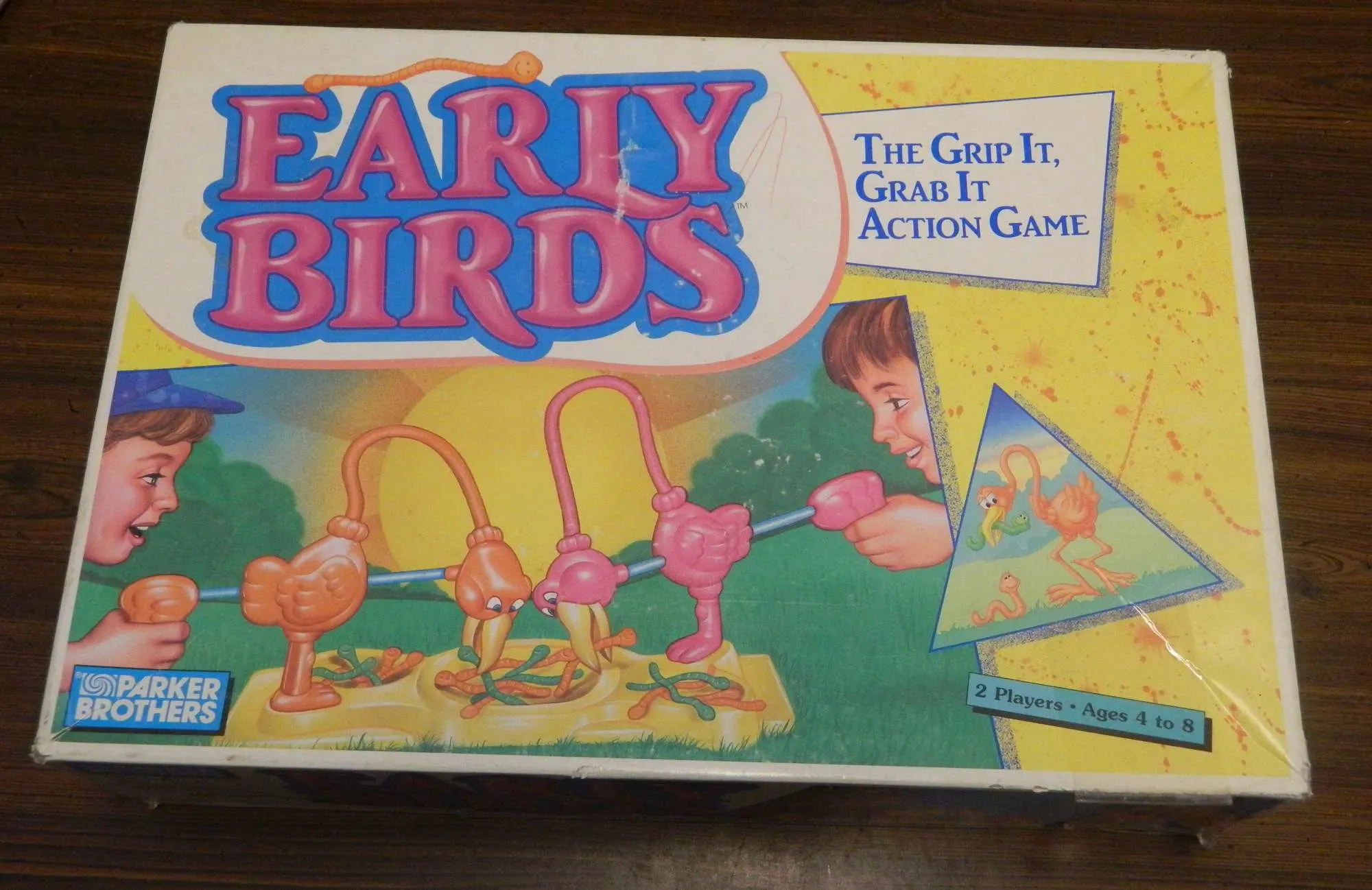
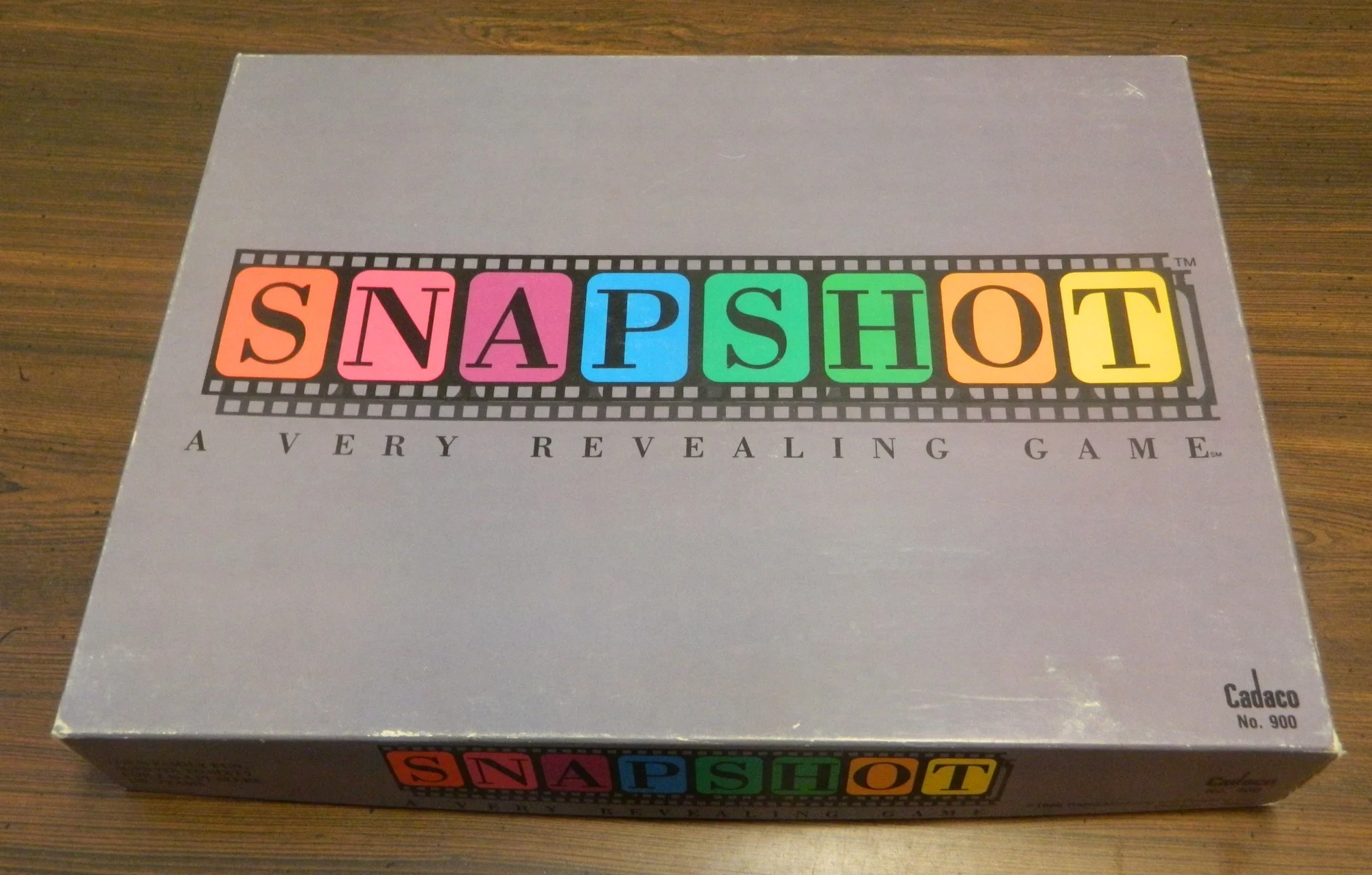
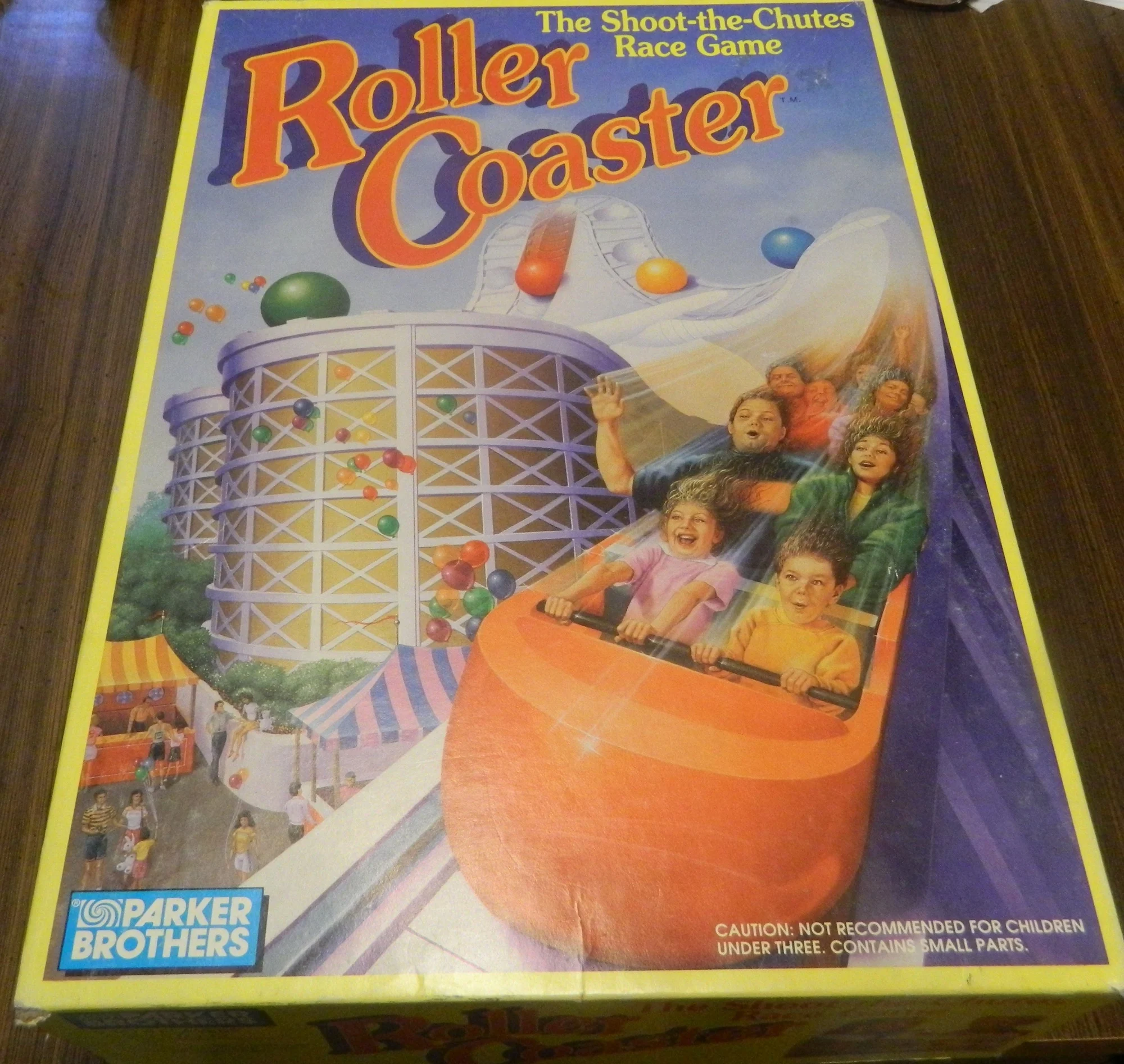
Roger Burten
Thursday 11th of November 2021
HI, Eric. It was fun reading through your analysis and comments. I've never read such a detailed evaluation. I am the inventor of Stampin'. I created it as a "light weight" game that I figured most average kids and families wouldn't analyse too deeply, looking for the possible flaws and weaknesses. I sold the USPS 75,000 of them in '89-'90, so I guess the weaknesses weren't "fatal" flaws.
Thanks, again, as I see 2 Stars as better than 1 Star any day! Roger Burten Rainy Day Designs